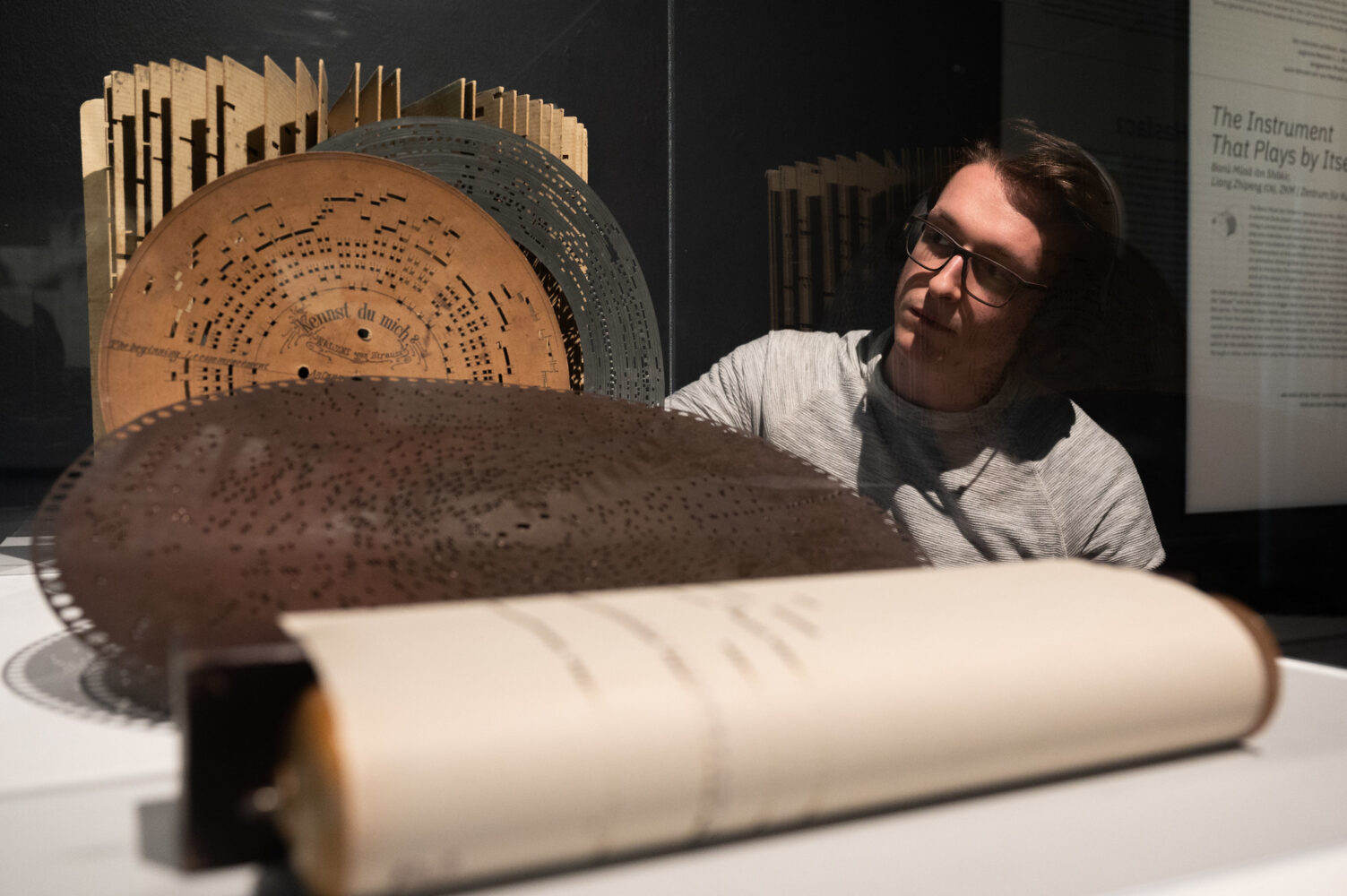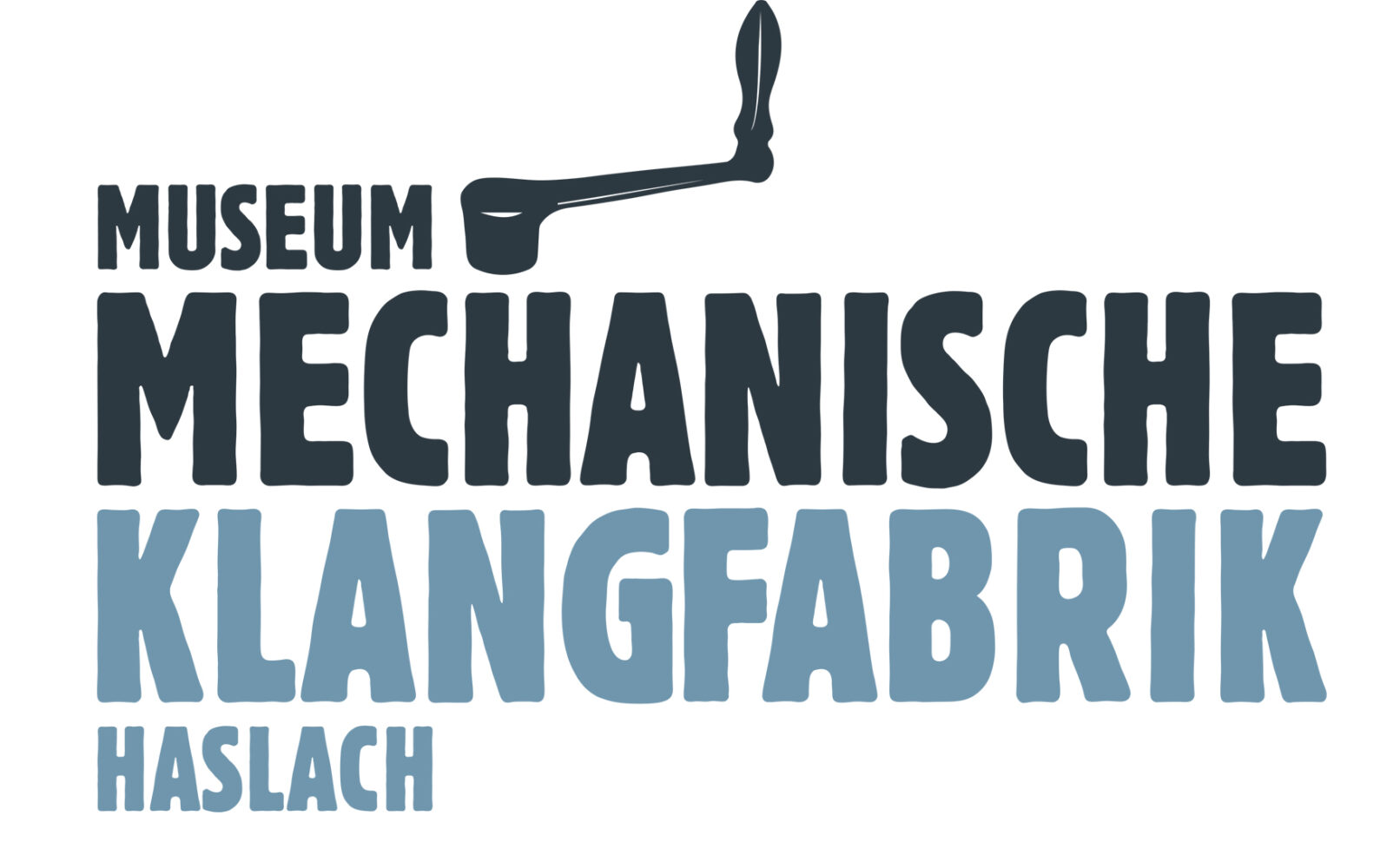One of the exhibits of the Sound Factory Haslach is this flute organ, a mechanical musical instrument that plays automatically by means of a pinned roller.
The flute organ with crank and pinned barrel consists only of flute pipes, which are operated by a crank and a metal weight. The first flute organs are likely of German origin and were probably first presented to an audience in Vienna’s Müllersche Kunstkabinett in the 1780s. Smaller flute organs with some twenty to thirty pipes were installed in clock cabinets or in the lower cases of clocks. Larger instruments with over a hundred pipes were built into furniture of all kinds, such as writing secretaries, chests-which often also had an integrated clock and sofas. Flute organs were expensive luxury items whose external appearance made them a highlight of Biedermeier living culture.

Mechanical Sound Factory Haslach
The Museum Mechanical Sound Factory owes its existence to Erwin Rechberger (b. 1925), who was born in Haslach, Upper Austria, and his passion for music. Obsessed with the desire to establish his own living museum, Rechberger perused flea markets and junk shops ajter the end of World War II, which gave him the idea of dedicating a museum to music automatons. On the one hand these instruments allowed him to make music again, which had no langer been possible after the war, and on the other hand Austria’s museum landscape was lacking such a specialized museum. In an effort to put together an exhibition ranging from the smallest to the largest mechanical Instrument, Rechberger soon found suitable objects all across Europe and assembled them with the meticulousness of a passionate collector. He bought his first instrument, for example a mechanical pedal piano with a paper rollfrom a dealer in the Upper Austrian city of Schärding, but who in turn had purchased it from a dealer at a music workshop in England that was a renowned court supplier to the English royal family. Together with his son, Rechberger undertook purchasing tours to Vienna, Germany, Switzerland, Holland, Denmark, Belgium, and today’s Czech Republic, searching for old music automatons at antique shops, private dealers, private museums, and even flea markets. This was a tedious undertaking, as flea markets often only offered spare parts for these machines. The growing esteem enjoyed by this technical wonder world of sound, to which museums in other countries were also now being dedicated, forced him to close some of the gaps in the collection with purchases from auction houses. As early as 1994 he opened the first Austrian Museum of Music Automatons in Haslach, which explored the development of music automatons from the Baroque to the interwar period. This collection, featuring some 160 exhibits, was acquired by the Verein Kultur in the Mechanical Sound Factory Haslach with the support of the Province of Upper Austria and now forms the core of the museum, which is able to present the exciting history of music automatons in a scholarly, comprehensive manner that is nonetheless comprehensible to the general public.
With the kind support of the Mechanica/ Sound Factory Haslach and the collector Erwin Rechberger

